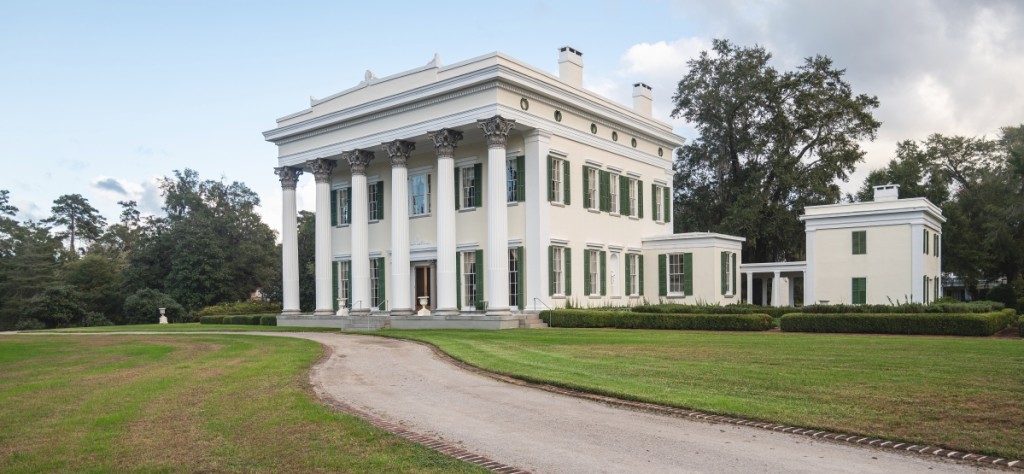
An exceptional example of Greek Revival residential architecture in the United States, Millford was constructed in Pinewood, S.C., between 1839 and 1841 for John Laurence Manning and his wife, Susan Hampton Manning. Master builder Nathaniel Potter of Rhode Island utilized Minard LaFever’s Beauties of Modern Architecture for design inspiration.
By Laura Beach
HILLSBOROUGH, N.C. – The mid-Twentieth Century is memorable for the debut of new museums devoted to the American arts, from Old Sturbridge Village in 1946 to the Museum of Early Southern Decorative Arts (MESDA) in 1965. The most successful of these institutions retain the idiosyncratic stamp of their founders, capturing and distilling the essence of the passion and imagination that allowed the extraordinary to flourish in the first place. Each also bears the imprint of the curators and administrators charged with the complicated, delicate task of transforming a private realm into teachable moments for public consumption.
Founded in 1993 by the collector and preservationist Richard Hampton Jenrette (1929-2018), who in his lifetime continued to inhabit seasonally the six properties originally in the group, Classical American Homes Preservation Trust (CAHPT) is embarking on the next phase of its transition from founder’s institution to a fully professionalized organization. Leading the charge is board chair Lucy Clark Dougherty, elected in 2019, and CAHPT’s new president, Robert A. Leath, who assumed his post in May 2020, not long after Covid brought the museum world to a near halt.
As conceived by Jenrette, a business savant who catapulted the investing world into a new era as co-founder of Donaldson Lufkin & Jenrette and who later, as its chief executive officer, transformed the insurance giant The Equitable Companies, CAHPT began as a decentralized collection of houses and related furnishings. Its mission – to preserve, protect and open to the public examples of Classical American residential architecture, surrounding landscapes and trails, as well as fine and decorative arts of the first half of the Nineteenth Century – remains unchanged, even if thoughts on how best to achieve that mission have evolved.

With a series of new hires and collaborative programs with other institutions, CAHPT president Robert A. Leath is transforming Classical American Homes into an education-driven organization.
Leath inherits an institution substantially defined by two predecessors, co-presidents Margize Howell – who joined Donald Lufkin & Jenrette as its corporate curator in 1984, became CAPHT’s executive director in 2010 and remained close to Jenrette throughout his life – and scholar Peter Kenny, who came to CAHPT in 2014 after a distinguished career at the Metropolitan Museum of Art. The co-presidents retired from the trust in March 2020.
In a phone conversation from Chapel Hill, N.C., where he recently moved after 15 years in Winston-Salem, N.C., Leath told us, “Margize was a critical figure in the establishment and trajectory of Classical American Homes. She was with Dick Jenrette for more than 30 years as the collection was assembled and the houses put together. With a track record of important scholarly publications, Peter raised the bar for the kind of curatorial scholarship that will be required of Classical American Homes in the future.”
Leath, who like Jenrette grew up in North Carolina, held curatorial posts at Historic Charleston Foundation, George Washington’s Fredericksburg Foundation and Colonial Williamsburg. He first met Jenrette in the 1990s at Historic Charleston’s Nathaniel Russell House. The men’s paths later crossed regularly in Charleston and New York, often at CAHPT’s George F. Baker Houses, where CAHPT was headquartered and Jenrette resided much of the year. “Dick was one of the kindest, gentlest, wisest men I’ve known. He could make anyone feel completely at home,” Leath recalls.
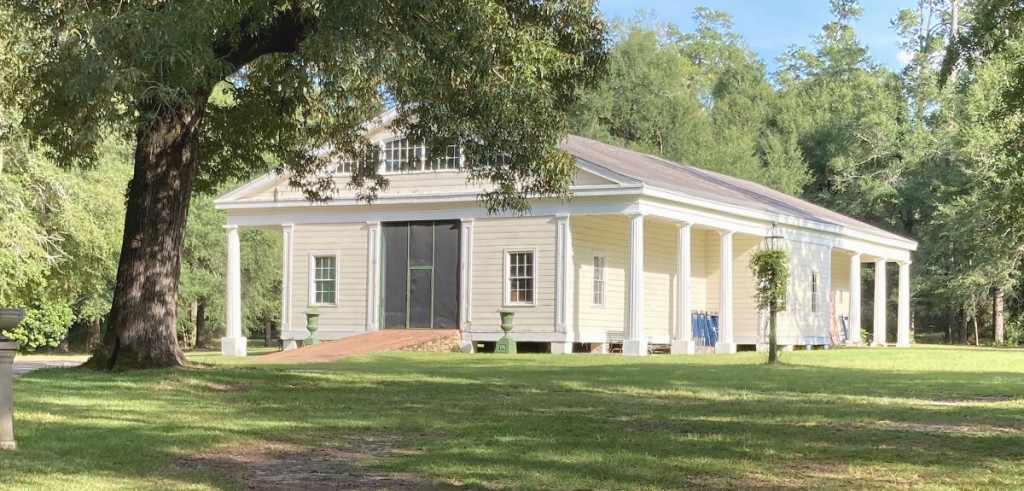
Projects currently underway include the documentation of Millford’s 1840s stable building using state-of-the-art technology.
Leath arrived at MESDA in 2006, two years after the death of its founder, Frank Horton (1918-2004). Former chief curator and vice president of collections, research and archaeology at MESDA and its institutional parent, Old Salem Museums & Gardens, Leath led the effort to reinstall the museum’s galleries, launch its first website with online research databases, forge an academic partnership with the University of Virginia for the annual MESDA Summer Institute, and take the scholarly MESDA Journal online.
He joins CAHPT at an opportune moment. With the settlement of Jenrette’s estate, CAHPT’s endowment now stands at about $75 million. Leath says, “There’s no question that Classical American Homes is blessed with generous resources, thanks to Dick Jenrette and his amazing business career. It leaves us with the resources to make these properties important while committing ourselves to an educational mission that will be broader than the individual properties. We’ve been positioned to weather the current storm and to think carefully about how we reemerge in 2021.”
Already Classical American Homes is making substantive changes. It sold Cane Garden, a St Croix sugar plantation begun in 1784 and CAHPT’s southernmost property, in 2020, adding proceeds from the sale to the trust’s endowment. It is in the process of moving its administrative headquarters from the George Baker Houses – built in the 1920s and, while Classical in inspiration, not strictly within the not-for-profit’s core mission – to Ayr Mount, an 1815 plantation house in Hillsborough, N.C., that was the first property Jenrette donated to Classical American Homes. The other CAHPT properties are the 1825 Edgewater in Barrytown, N.Y.; the 1838 Roper House in Charleston, S.C.; and Millford, built between 1839-41 in Pinewood, S.C. An assessment of CAHPT’s collections is underway, based on a newly adopted collections management policy that is in keeping with the field’s best practices. New collections management software will ultimately make CAHPT’s collections accessible online.
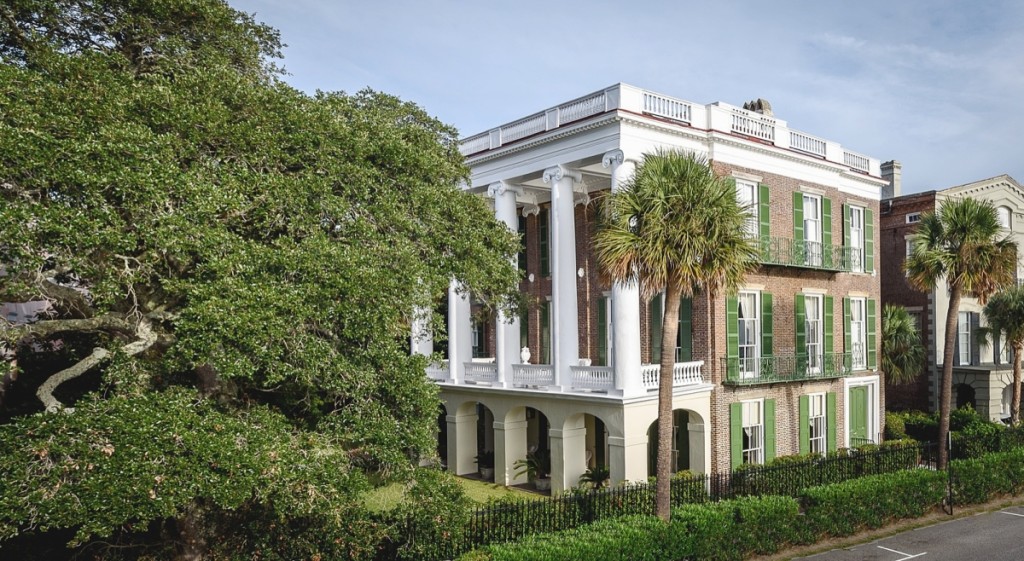
Roper House, erected on Charleston’s High Battery, was the first historic house purchased by Richard H. Jenrette in 1968. Built for Robert William Roper, it was completed in 1838 and is an outstanding example of Greek Revival architecture.
On December 8, Leath journeyed from Ayr Mount to meet with staff at Millford and was due at Roper House the following day. His travel schedule will likely increase once the current health crisis has passed. A sought-after speaker, he is scheduled to discuss William Hodgson, a painter he researched with Carolyn J. Weekley for a recent cover story in The Magazine Antiques, at Colonial Williamsburg’s 73rd Antiques Forum, a virtual conference planned for February 19-24. Leath’s investigation began after Pennsylvania dealer Kelly Kinzle exhibited a suite of paintings by the artist, known only as the Payne Limner before Leath and Weekley began digging, at the 2018 Winter Show in New York. The late Eighteenth Century likenesses are now on view at MESDA, which secured their loan and partial acquisition with the help of MESDA benefactors Patty and Bill Wilson.
Classical American Homes signaled the expansion of its educational mission with the December 1 announcement of five staff appointments. Each new hire is a subject expert; two additionally serve as site supervisors. Department heads are based in upstate New York, North Carolina and South Carolina.
“We’re not going to have a highly centralized administrative headquarters, which wouldn’t work for an organization like ours with important sites in three states. Right now we’re working to professionalize the organization down to the small things like an employee handbook, job descriptions and an organizational chart – all the basic infrastructure to match how we now plan to run ourselves,” Leath says.
Joining Leath and several others at Ayr Mount, Jeff Klee, named vice president and senior director of architecture, will oversee the trust’s historic buildings and landscapes, and will supervise the site management teams. Until recently an architectural historian at Colonial Williamsburg, Klee earned his doctorate degree from the University of Delaware.
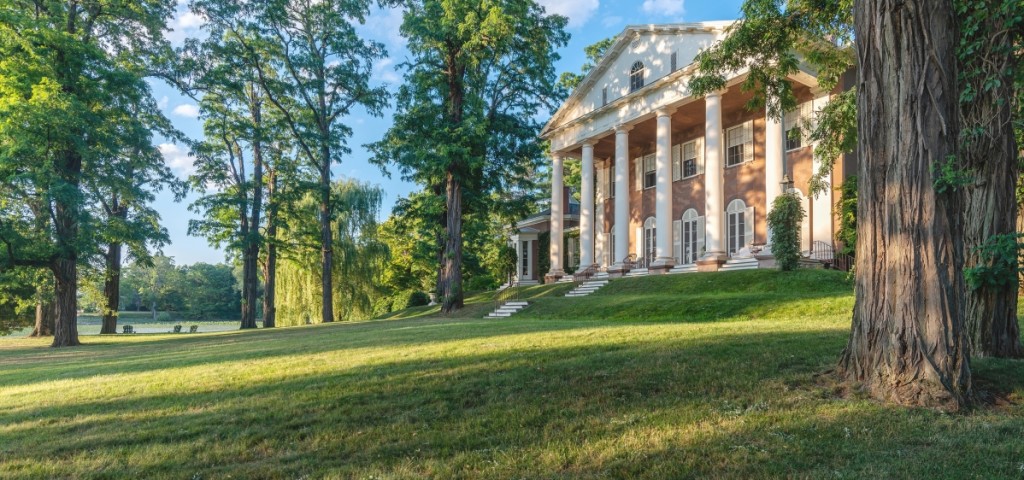
Completed in 1825, Edgewater was built for Lowndes Brown and his wife, Margaret Livingston Brown, on land given to the couple by her father, John R. Livingston. The house was constructed on a small peninsula in Barrytown, N.Y., overlooking the Hudson River and facing west toward the Catskill Mountains. Alexander Jackson Davis designed the octagon library appended to the north side of the house in 1852.
Klee, who began work in September, observed, “One of the exciting things for all of us is how much more there is to learn about each site. Part of my job is to ensure that the buildings are maintained at a very high standard – in other words, keeping them looking like Mr Jenrette would have wanted them to but also ensuring that we are caring for them in a way that manifests the highest standard of museum-quality preservation. That involves taking care not only of the things visitors see, but also things that are very much behind the scenes.”
As CAHPT’s first director of engagement, Lauren Northup, based at Roper House, will head up development, external communications and programming, reprising a role she filled as director of museums at the Historic Charleston Foundation. “Beyond the historic narratives of the sites themselves, I look forward to sharing with audiences the process of discovery now underway. Letting the public in on what we are doing behind the scenes at Classical American Homes is one of the most compelling narratives we can tell,” Northup told Antiques and The Arts Weekly.
Grant Quertermous, CAHPT’s new curator and director of collections, will also be headquartered at Ayr Mount. Until recently curator at Tudor Place, the 1816 house built for George and Martha Washington’s granddaughter, Quertermous worked at sites associated with four US presidents, among them Andrew Jackson’s Hermitage, James Monroe’s Ash Lawn-Highland and James Madison’s Montpelier.
Eleanor Gould, CAHPT’s new director of historic landscapes and site supervisor at Edgewater, began work in October, initially meeting with those involved in caring for each of CAHPT’s landscapes and clarifying standards and practices for the sites. Formerly curator of gardens at Monticello and most recently vice president of horticulture and landscape at Mount Auburn Cemetery in Cambridge, Mass., she hopes to schedule public programs beginning as early as this spring. She says, “We’re working with regional allies in landscape to host events at Edgewater, and several have commented that they can’t think of a more beautiful setting for a landscape symposium. I was drawn to this position in part out of a desire to use this space to celebrate and educate the public on the landscapes that matter in this country.”
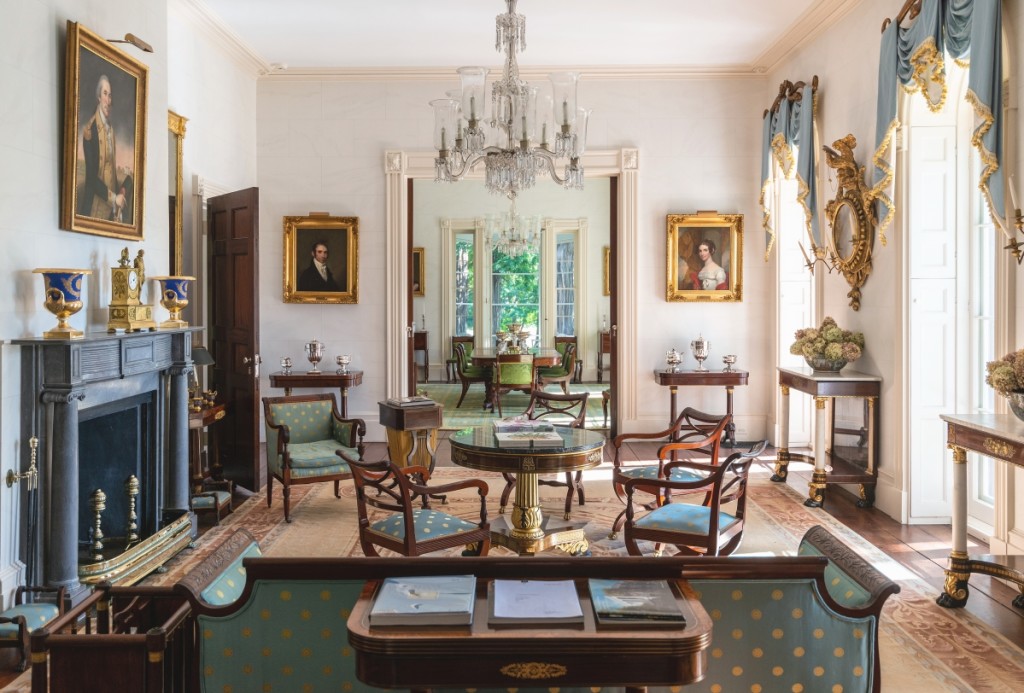
The Drawing Room at Edgewater looking toward the Dining Room. The portrait over the mantel is “George Washington Before Nassau Hall” by Charles Peale Polk, completed in 1790. The gilt-bronze mantel clock is by Jean-Baptiste Dubuc. The center table, game table, sofa and canterbury are all by Duncan Phyfe; the pier tables are attributed to Charles-Honore Lannuier. The three armchairs in the center of the room are by Hagen & Meier. The pair of portraits on the back wall depict Moses and Elizabeth Wheeler, completed in 1823 by Gilbert Stuart.
Will Hamilton has been appointed director of historic preservation and Roper House site supervisor. The former Historic Charleston Foundation properties manager will direct building maintenance and restoration efforts across all CAHPT properties.
Several important new initiatives are already underway. Edgewater, the Hudson River villa built for Captain Lowndes Brown of Charleston and his wife, Margaret Livingston, looks to partner with the Institute of Classical Architecture & Art (ICAA) on its new Bunny Mellon Curricula in landscape architecture and design.
At Millford, a foremost example of Greek Revival residential architecture designed by the Rhode Island-born Nathaniel F. Potter, staff is documenting the plantation’s 1840s stable using state-of-the-art technology. Klee notes, “The stable became a high priority for us for documentation partly because it needs a new roof. The question was, what kind of roof? The intensive documentation project that we will continue into next year is a comprehensive look at the building that will record it in plan, section and elevation. We will get a detailed set of drawings out of this, as well as richly detailed computer models.”
Of Classical American Homes’ properties, Millford may be the most extraordinary. Klee remarks, “It’s such a thoroughgoing, comprehensive embrace of a particular aesthetic. Millford seems to have just popped out of the ground in 1841, complete with its furnishings and outbuildings. It’s an art history class in the Greek Revival in a single building.” The team sees Millford, which retains a significant collection of Duncan Phyfe furniture made for its first owner, as a possible academic campus for programs such as those hosted by the Attingham Trust in the United Kingdom. “Within a two-hour drive is a vast array of Southern history,” Northup notes.
Media initiatives over the coming months include a podcast series, videos for posting online and perhaps a smart-phone friendly audio guide to the properties. Northup explains, “We’re developing the podcast series now. The concept this first season is to introduce the main characters, taking Mr Jenrette as our starting point, then introducing the houses themselves, from construction through their restoration over the years, and providing commentary from our passionate, knowledgeable staff. Videos will complement the podcasts. From there we will unspool the narrative by focusing on individual objects.”
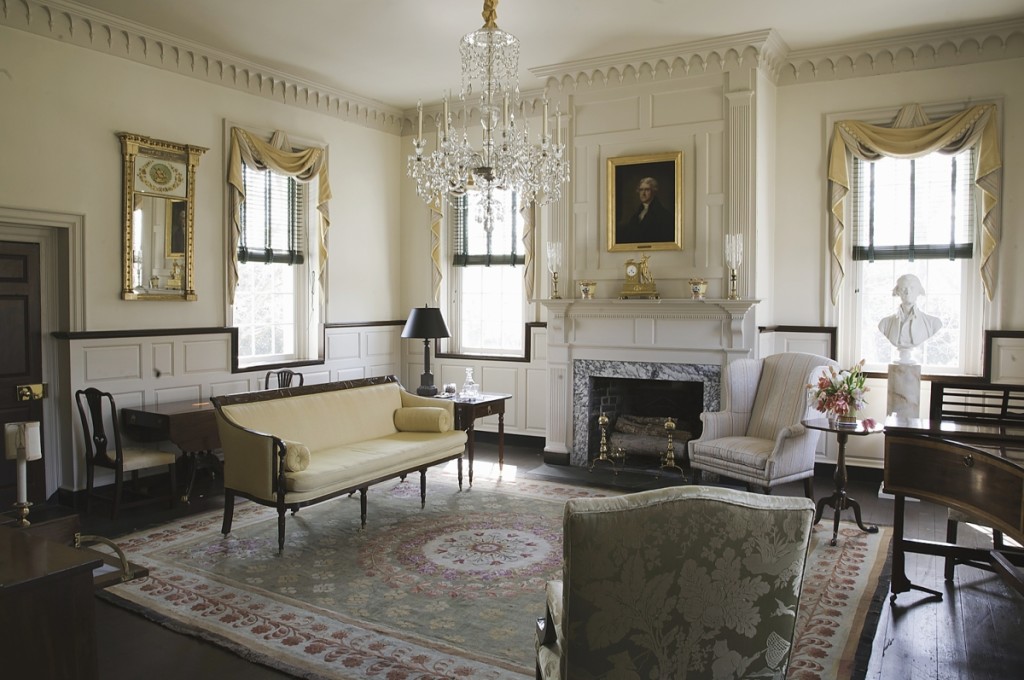
The Music Room at Ayr Mount. The portrait of Thomas Jefferson over the mantel is an early Nineteenth Century depiction by Ezra Ames after Gilbert Stuart. The sofa is by Duncan Phyfe. Partially visible at right is the Kirkland family’s John Broadwood & Son piano, one of the original Kirkland family objects Jenrette was able to bring back to Ayr Mount. The elaborate mantel is attributed to joiner Elhannon Nutt of Wake County.
Jenrette, in his business life an advocate for fiscal restraint and creative solutions, laid out six points of guidance for Classical American Homes. “The last of those points was that he felt we should try to stay ‘small and solid’ and use our resources to benefit the field as a whole,” stresses Leath, who hopes to leverage CAHPT’s strengths by embarking on partnerships with other organizations. CAHPT will join with MESDA, Historic Columbia and the Columbia Museum of Art to present the 2021 MESDA Fall Conference, which will convene next October in Columbia, S.C., to explore the decorative arts of the South Carolina Midlands. As it has in past years, CAHPT is also sponsoring the Decorative Arts Trust’s Emerging Scholars Colloquium, part of New York Antiques Week and this year virtual. Collaborations with Clemson University and the College of Charleston are also under discussion.
A born storyteller who wrote several memorable books, Richard Jenrette often cited with amusement the first interiors he furnished with the help of Otto Zenke. The North Carolina decorator filled the incipient collector’s New York residence with such speed that Jenrette later called Zenke’s approach “Instant Otto.” Nearly three decades after its founding, Classical American Homes Preservation Trust is also reaching maturity, its next chapter to be shaped by a talented young staff with insight into the challenges and opportunities faced by historic house museums in the coming decades.
For more on Classical American Homes Preservation Trust, go to www.classicalamericanhomes.org.



















